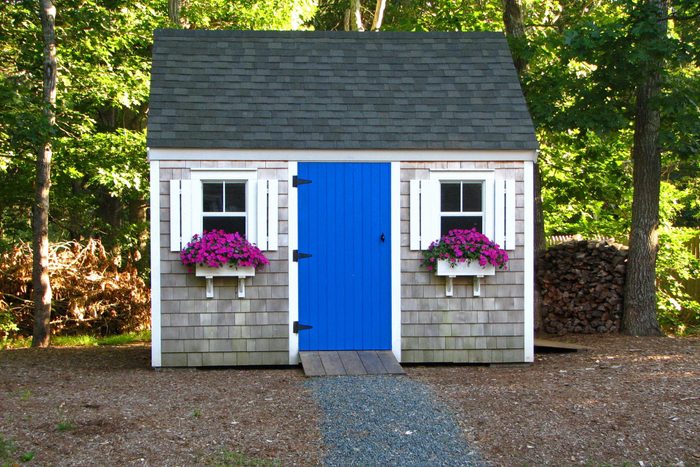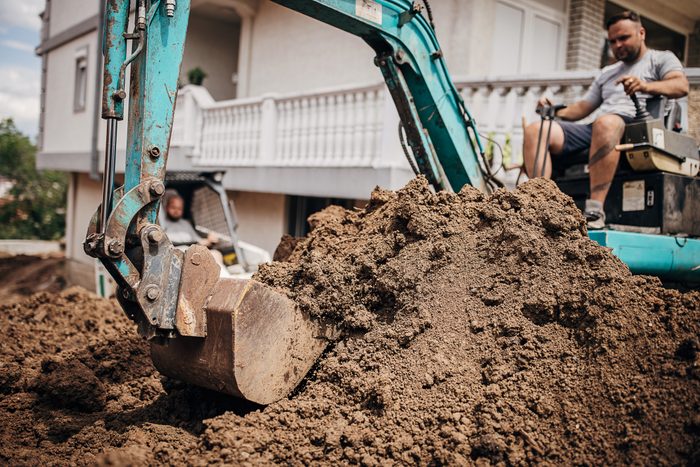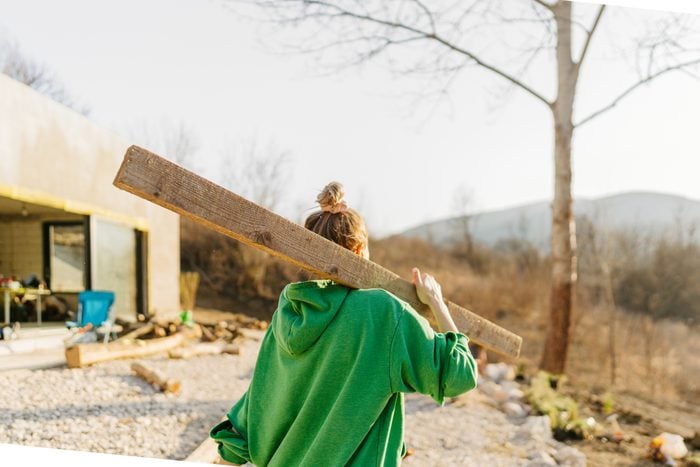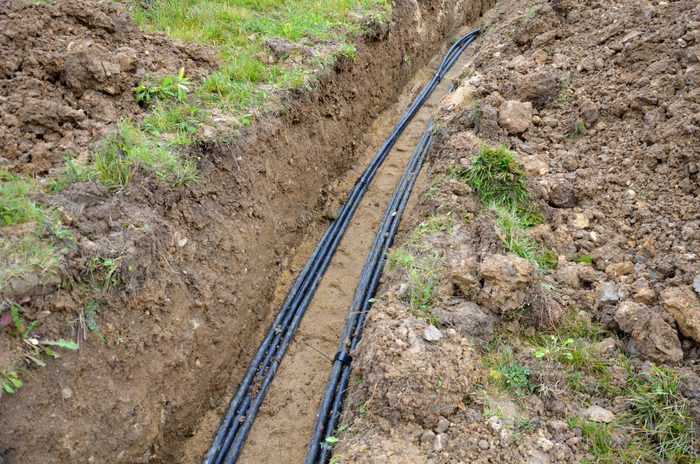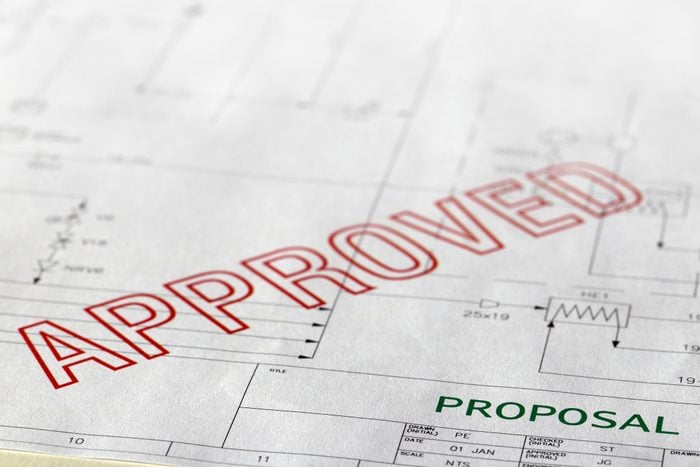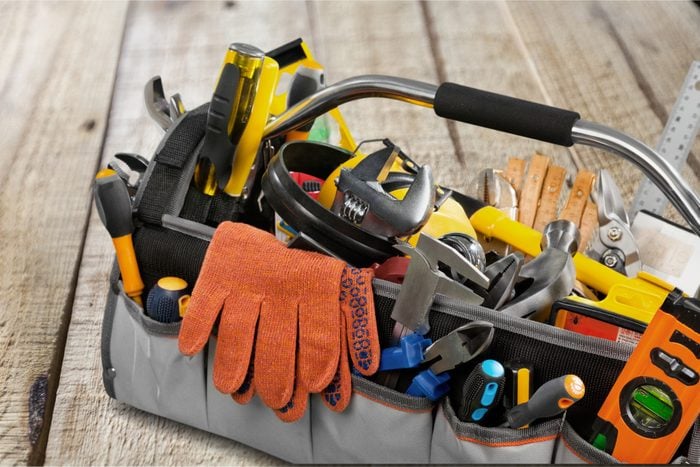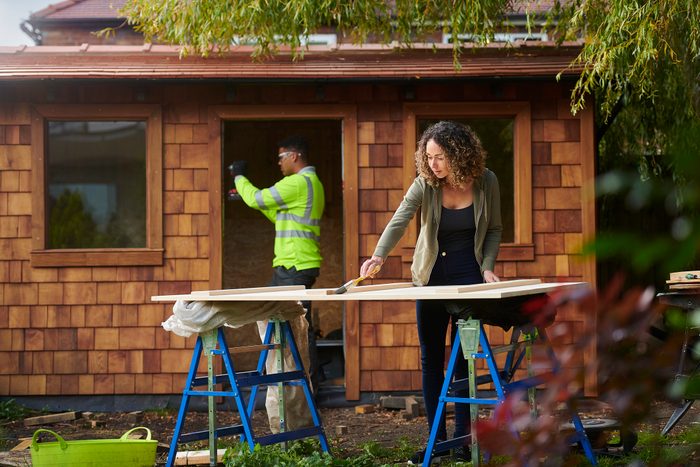Consider If the Kit Really Fits Your Needs
DIY shed kits are attractive for a bunch of reasons. They allow DIYers to save money while taking on a fun project. But even with the potential for savings, these kits are large investments, and DIYers need to consider if the kit really fits their needs.
The chief concern is size. Many kits are smaller than traditionally-built alternatives, particularly DIY home kits. DIYers may be better off saving money until they can afford a more traditional build.
Also, consider what you’re using the kit for. If it’s for a home, you’ll need to know how much insulation can fit in the walls. In traditional construction, 2×6 lumber with R-19 insulation is the standard for exterior walls.
Undersized lumber in some kits won’t allow for as much insulation, making these homes less efficient. Shopping for a kit that can handle more insulation may be worth it.
Is the Dealer Reputable?
Before spending a dime on a DIY home or shed kit, find out if the manufacturer or dealer is reputable. Checking Google reviews, social media and the Better Business Bureau’s website is a good start. Be sure to ask around to see if any of your trusted acquaintances can suggest a company.
Site Work and Drainage
A good portion of work should happen before the kit even shows up. The place you’re planning to build on probably needs some site prep work — leveling the soil, pouring concrete, digging footings or simply adding gravel.
Site prep can be tough to do by hand. The alternatives for most DIYers are hiring a crew or renting heavy equipment. Be sure to factor these costs into your kit budget.
Find a Place To Put the Kit (and a Way To Get It There)
Prepping a site for a DIY home or shed kit goes beyond the building’s actual footprint. These kits are big, heavy and come stacked on pallets. Even a small shed kit comes with a lot of parts, hardware, lumber, brackets, etc. These pallets have to go somewhere, and the closer to the actual building site, the better.
There’s also a challenge getting these materials to the site. The delivery driver can usually take a forklift to the end of the driveway. But unless they have a large lift meant for sheds, they typically can’t drive on grass. If the site is quite a distance from the driveway, it may be worth renting a tractor to carry the pallets.
Are You Considering Electricity?
Electricity is a major consideration for sheds and homes. There are a few ways to energize the building, so DIYers need to weigh their options:
-
Running underground conduit from the house to a sub-panel in the shed;
-
Installing new service with a meter from a pole;
-
Setting the building up for solar power with a power bank of batteries;
-
Installing a generator for occasional power;
-
Running an extension cord from the house for temporary power.
You Might Need a Permit
Permits and local requirements can be murky areas for DIY shed and home kits. Some municipalities aren’t concerned with buildings not permanently attached to the ground through footings or other means. This means homeowners can place sheds in their backyards without adhering to the local codes. Other municipalities aren’t so lenient.
Before you start, call the local code enforcement officer and ask what’s required. Discuss the plans for the building, its proposed location and intended use.
You Will Need Tools
DIY shed and home kits come with all the materials and plans needed to put them together, but they don’t typically come with tools. Many DIYers already have the basic tools they need to assemble these kits, but some might be starting from scratch. If that’s you, you’ll undoubtedly need some or all of the following:
-
Speed square;
-
Hammer;
-
Tin snips;
-
Utility knife;
-
Chalk line;
-
Level;
-
Impact or drill driver;
-
Circular saw;
-
Reciprocating saw;
-
Caulk gun;
-
Ladder;
-
Personal protective equipment.
Get a list of required tools from the manufacturer ahead of time. Keep in mind things happen, and improvisation may be necessary to keep the project on track. Be ready for any last-minute runs to the hardware store for a tool or two.
You Might Need Help
DIY kits are often portrayed as one-person projects, but most DIYers will probably need help.
Whether it’s lifting wall assemblies or placing trusses on top of wall plates, things can get heavy and awkward, so it’s best to enlist the help of a friend or family member. They can steady ladders and hand materials up from the ground, saving time and energy.
It Will Probably Take Longer Than You Think
Here’s the hard truth with any DIY project: Be prepared for it to take longer than you think.
Unless you have extensive experience assembling these kit structures, there will be mistakes, learning curves and backtracking. This is normal and totally acceptable, but it will set the timeline back. So if the project is supposed to take one weekend, set aside two or three. If it doesn’t take that long, that’s a bonus.
Are the Savings Worth It?
That depends. There are a few things to consider.
Start with the cost of materials. In a DIY kit, they’re marked up considerably. You could purchase the same materials for much less at the local lumber yard or home improvement store. But that presumes you’re comfortable measuring, marking, cutting and assembling all those components yourselves.
Also, labor savings should offset your time and energy constructing the building. If you’re not enjoying the work, no DIY kit is worth it. But for folks who love a challenge and putting together big puzzles, DIY home and shed kits can be worth every penny.

